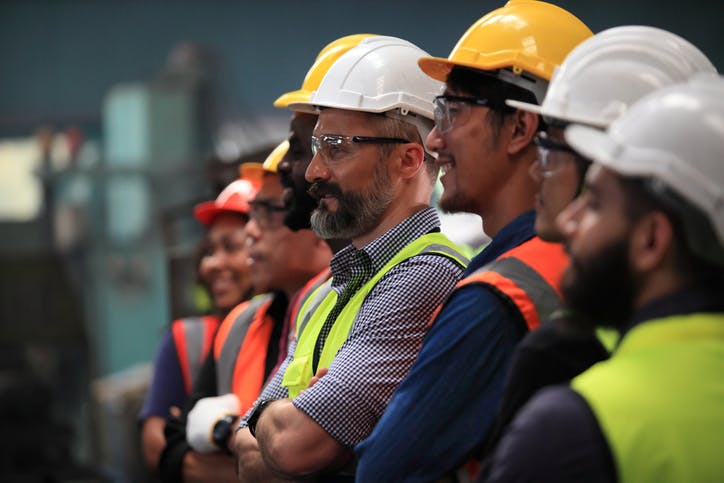Driven by European policy and financial aid amounting to 15 billion euros made available to member states, the deployment of optical fiber has emerged as a crucial technological challenge to provide broader access to fast connectivity. In this sense, it represents a definite economic development and social inclusion factor. Europe is thus the best-served region, closely followed by North America. What lessons can be learned from the past decade and how can we capitalize on these lessons to deploy faster and more extensively in Latin America?
Combining speed, subcontractor management, and adherence to deployment schedules
Although all European countries did not begin deployment at the same time, the speed of fiber optic construction and fiber service activation proved crucial.
In the ultra-competitive telecoms market, being the first to deploy can win new customers: fiber has become a popular connectivity technology, with many households wanting access to it. Not only does fiber optics act as a competitive lever to win new customers and market share, but it’s also a means of increasing the average customer basket – and operators’ revenues – as prices are higher than ADSL.
To speed up the rate at which households are connected to fiber optics and meet the ever-increasing demand, operators have had to call in subcontractors. As a result, dealing with high volumes of operations makes it difficult to ensure that the work is always carried out to the highest standards, especially when responsibility is in the hands of so many stakeholders. Without direct and real-time control, they are confronted with anomalies due to interventions that do not comply with quality standards. This delays the handover of equipment during the network construction phase, or the commissioning of the network for subscribers during the connection phase.
It is essential to get it right the first time in order to meet deadlines and thus avoid potential penalties and additional costs associated with an extended schedule. First Time Right Automation enables this: through computer vision, it detects anomalies on the photos that field agents take of their work, and informs them about it. It thus prevents delays caused by network defects. Operators in Latin American countries who demonstrate efficiency in accelerating the deployment of their networks will undoubtedly be advantaged, just as was the case in Europe.
Automate quality control right from the start of network rollout
In France, many operators use image recognition solutions to monitor the quality of their operations, like the one of Deepomatic. Photos taken by field workers are analyzed in real-time, and they receive feedback to correct any faults detected. But this automated quality control process was implemented relatively late, when the network was already deployed and connections were at an advanced stage. The country still suffers from the quality problems inherited from the past, particularly on its street cabinets.
While the rollout of fiber optic networks has started more recently in Latin America, it is essential that operators systematically check the work carried out by subcontractors right from the start – a task made possible by Computer Vision AI. The objective is, therefore, to build a network on solid foundations without waiting for too critical quality issues to arise. That is why the CTO (or NAP), which represents the pivotal point of the networks, just like street cabinets in France, requires the utmost care when being installed.
The more problems accumulate on equipment, the more expensive it is to repair it. This is all the more true as poor quality of service is subject to the snowball effect: when technicians operate on equipment that has already deteriorated, they are naturally less careful in their actions. If standards are respected from the outset, this encourages each field worker to do their job properly. Added benefit: The subscriber experience is no longer damaged, and churn is avoided.
Preventing errors in aerial and underground networks to avoid cost overruns
In Europe, fiber deployment is a combination of underground and aerial networks, with the latter preferred in rural areas.
Latin America has its own specific geographical characteristics: some countries are much larger than those in Europe, making deployment naturally longer and the investment more substantial. To avoid wasting too much time and reducing OPEX, South American operators also opt for mixed deployment.
Each type of network has its advantages and disadvantages: The overhead fiber network uses the electrical and telecom infrastructure, i.e. the poles, to run the fiber cables and install the equipment. This makes it less costly to deploy. However, the bill can rise drastically in the long term if certain quality standards are not met during deployment. In fact, the overhead network is often less organized, and some poles end up overloaded, requiring numerous and recurrent maintenance operations.
Underground networks, on the other hand, require digging trenches and pulling chambers to install the cables in which the optical fiber will run. This civil engineering work is costly for infrastructure operators.
It’s essential to optimize OPEX by reducing quality control costs and avoiding rework. Thanks to First Time Right Automation, operators apply their standards at scale and all operations carried out by subcontractors are controlled in real-time, limiting the risk of additional truck rolls.
Empowering workers in the field in a context of skills shortage
Like the rest of the industrialized world, Latin America suffers from a skills shortage in the field service sector: companies are finding it hard to recruit.
The new recruits they manage to employ are quickly put to work in the field without sufficient experience. It is precisely this lack of experience that is at the root of many errors during interventions.
To overcome this, companies, including telecom operators and their subcontractors, need to harness digital solutions to support field teams in their mission, guide them, and enable them to do their job well. Thanks to Deepomatic’s First Time Right platform, field employees can rely on automated quality control tools that give them real-time feedback via their mobile interface to correct potential anomalies.
While deploying fiber optics in Latin America presents its own challenges due to local technical and urban specificities, many lessons can be learned from the European experience to optimize the process and limit costs for operators and their subcontractors. Their best ally in this adventure? Deepomatic’s First Time Right Automation, which contributes to the necessary digital transformation of telecom operators.





